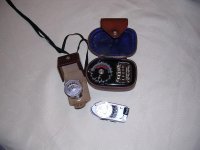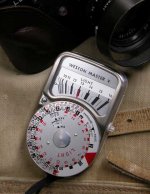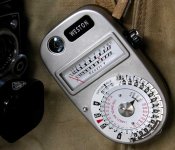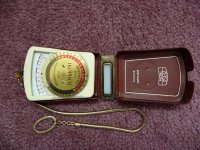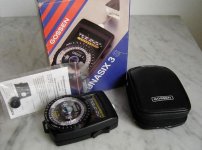ChrisPlatt
Thread Killer
I have an old Vivitar 45 CdS meter.
It's an inexpensive but nicely made incident/reflecting model.
Thanks to G'man I just discovered it is also accurate with a modern 1.5V battery. 🙂
I also have my first meter, a tiny, 30 year-old Sekonic selenium model.
It's still right on in normal light but not very sensitive in low light.
Carrying a separate meter is a real PITA so these get very little use.
I just picked up a little shoe-mount Vivitar CdS model that might see more action...
Chris
It's an inexpensive but nicely made incident/reflecting model.
Thanks to G'man I just discovered it is also accurate with a modern 1.5V battery. 🙂
I also have my first meter, a tiny, 30 year-old Sekonic selenium model.
It's still right on in normal light but not very sensitive in low light.
Carrying a separate meter is a real PITA so these get very little use.
I just picked up a little shoe-mount Vivitar CdS model that might see more action...
Chris
Last edited:


